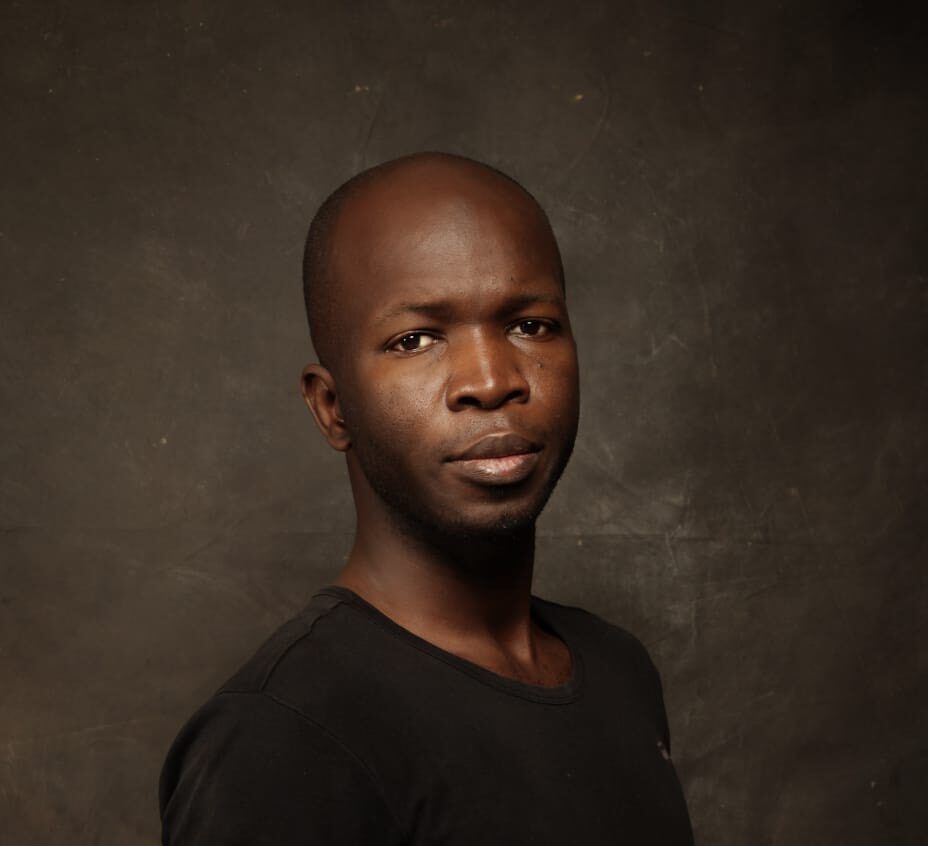Lune Diagne
Choregraph, dancer

- Performing Arts
- New York
“This exploration of the archives of Siki’s life, the places he frequented and the traces he may have left behind in New York will enrich my broader thinking on the geopolitics of the body, that is, a way of seeing the body as a complex tapestry of intimate and relational relationships, and political spaces that must find their place in the global landscape.”
My name is Alioune Diagne. I live in Senegal and the Netherlands, where I work as a visual artist, choreographer, and dancer under the name Lune Diagne. I studied at the Ecole des Beaux-Arts de Dakar from 2006 to 2007. At the end of 2007, I decided to devote myself to contemporary dance, while continuing to practice drawing and maintain my interest in visual arts, working with visual artists to create performances inspired by works that move me. For the past three years, after years of dance, I have returned to the visual arts.
Since 2018, I have been creating paintings and drawings depicting the facial expressions of the Senegalese infantrymen massacred at the Thiaroye camp on December 1, 1944. This Tirailleurs series has attracted attention from the art and science communities. Historian Jean-François Leguil-Bayart wrote an article about it, titled Alioune Diagne, ou la mémoire juste des tirailleurs, in which he suggests that my work restores ‘the right memory, a critical presence of the past, purged of all rancor, all hatred, all anger, but which recalls what was and should not have been.
Six years ago, after dedicating many years to dance, Alioune Diagne returned to the visual arts. He was trained in contemporary dance by Germaine Acogny and Ciré Beye. After two solos (Blabla and Cette ligne est mon chemin), he gained significant success with Banlieue, a creation for three dancers dealing with daily life in the Senegalese suburbs, co-produced by the CCN Ballet Preljocaj-Pavillon Noir in Aix-en-Provence and the Institut français in Saint-Louis, Senegal. After being featured at the international festival Danse, l’Afrique, danse! in Soweto, South Africa, Banlieue was selected for a tour across 18 African countries in 2013. At the same time, Diagne performed the solo Flora by choreographer Kenzo Kusuda at the Korzo Theatre in The Hague, Netherlands, and played a role in Fagaala by Germaine Acogny’s Jant-Bi company. Since 2019, he has been taking part in an artistic residency at the Stadsgehoorzaal in Kampen, Netherlands. In 2008, he founded the Diagn’Art Dance Company in Saint-Louis, which initiated and produced Duo International Danse Solo, the only annual contemporary dance festival in Senegal. In the visual arts, Diagne has participated in several exhibitions in Senegal and the Netherlands, and is currently represented by OH Gallery in the Netherlands.
For this residency project, I intend to travel to New York in the footsteps of Battling Siki, to document the neighborhood where he lived and trained, and to investigate the circumstances surrounding his murder in 1925, a case that remains unsolved. I will engage with New Yorkers to ask them about their connection to the generation of the 1920s, a period marked by the Harlem Renaissance when the arts, politics, Black literature, and many other fields flourished in New York.
I will also focus on the current generation, given the significant Senegalese community in New York. One Manhattan neighborhood (where Siki once lived) is even nicknamed Le Petit Sénégal on 116th Street. I will attempt to track the evolution of this community, year by year, since the 1920s, perhaps through an analysis of the body in space, as Black bodies were often threatened in both the United States and France during that time. I will therefore explore the current status of Black bodies and how it has evolved since the 1920s, with the aim of shedding light on Siki’s life and the injustices surrounding his death, while deepening the inquiry into the geopolitics of Black bodies, given that Siki used his own body as a means of survival and livelihood on both sides of the Atlantic.
The outcome of this research will take the form of an installation, including sculptures, paintings, photographs, and other objects that I will collect from Amsterdam, New York, Marseille, and Saint Louis—the cities where Siki lived. In a participatory contemporary dance performance, I will encourage the audience to interact freely with the performer and the artwork.
I’ve chosen the United States because Battling Siki fought there several times and spent the last three years of his life there before being murdered on December 15, 1925.
I would like to speak with New Yorkers who are familiar with the city’s history since the 1920s, to retrace Battling Siki’s footsteps, understand where he lived, boxed, went out at night, and discover the places that shaped his life there.
I’d also like to meet boxers and American artists who are interested in boxing, the presence of Black bodies in space, and the role of people of color in this cosmopolitan America.
This exploration of the archives of Siki’s life, the places he frequented, and the traces he may have left in New York, will deepen my broader reflection on the geopolitics of the body—viewing the body as a complex tapestry of intimate and relational connections, and political spaces that must find their place in the global landscape.
In partnership with

Ford Foundation
The Ford Foundation is an independent organization working to address inequality and build a future grounded in justice. For more than 85 years, it has supported visionaries on the frontlines of social change worldwide, guided by its mission to strengthen democratic values, reduce poverty and injustice, promote international cooperation, and advance human achievement. Today, with an endowment of $16 billion, the foundation has headquarters in New York and 10 regional offices across Africa, Asia, Latin America, and the Middle East.

